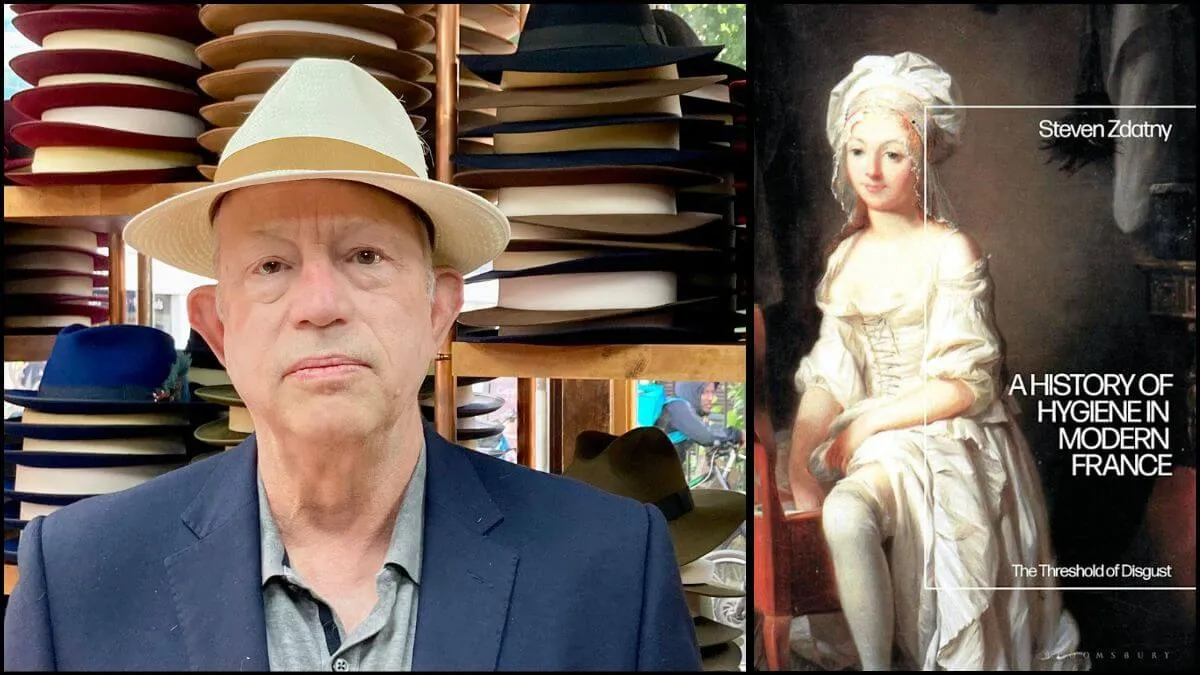In the introduction to his new book, A History of Hygiene in Modern France: The Threshold of Disgust (Bloomsbury; April 2024), Steve Zdatny, Ph.D., professor of history, notes that if we were able to go back into the past, “the first thing we would be struck by would be the smell.” But Zdatny doesn’t just cover the evolution of deodorant and indoor plumbing. Rather, he tells “a happy story of progress” of how hygiene revolutionized the human condition.
Two sources of inspiration sparked the idea for Zdatny’s latest book. The first occurred while he was writing an earlier book about the history of hairdressing and encountered lots of advice to people, particularly women, about how often they should be washing their hair or shampooing. “The way that people thought about the appropriate level of dirtiness or cleanliness intrigued me,” he says.
The second source of inspiration came while teaching his French history class. Each year, he assigns a chapter called “How They Lived” from a book by Eugen Weber titled France, Fin de Siècle about life in France in the 1890s. “The students’ reaction to the information in that chapter is pretty much, ‘Ewww!’” he says. This prompted him to learn more about acceptable standards of cleanliness (the “threshold of disgust” from Zdatny’s book title) and how those changed over time. He chose to keep the focus on France, bearing in mind that hygiene practices were evolving at varying speeds all around the world.
In researching the book, Zdatny discovered many wonderful sources, but two of his favorites are from around the same period—the late 1940s and early 1950s. One is a pamphlet called 112 Gripes about the French, which was published by the U.S. Army. “This was clearly the Army’s response to a lot of complaints they were hearing from the thousands of GIs in France after World War II,” he says. “More than one of those gripes was about how dirty and smelly the French were and how terrible their facilities for washing and defecating and the rest of it were.”
Zdatny’s other favorite document was a survey that Elle magazine did in 1951. “Are French Women Dirty?” the article asked, “and the answer to that rhetorical headline was: really dirty,” Zdatny says. For example, most of the French respondents to the survey said they didn’t brush their teeth or did so just some of the time. Some of them changed their underwear every day while others changed it every two weeks. Some shampooed their hair once every two weeks, some shampooed once a month, and some just brushed it out. Girdle washing typically happened every six months.
“Where everybody’s dirty, nobody’s dirty,” Zdatny says. “And yet, at the same time, standards of cleanliness change dramatically. So, what would be the incentive to get cleaner if you’re not beyond the bounds of propriety in the first place?” This is one of the questions that Zdatny addresses throughout the book.
People had been living for millennia without being clean, so why did the standards finally begin to change—and not just in France? “These developments were not steady and did not happen everywhere at the same pace,” Zdatny says. “It was very context dependent.” For example, it wouldn’t have been practical for a peasant living in the Dordogne region of France in 1815 to bathe every day and put on a set of fresh clothes. But in the Dordogne today, people are a lot more fastidious than they were a generation ago and even more so than they would have been two generations ago. So, as Zdatny points out in the book, hygiene practices largely advanced hand-in-hand with what was possible.
One of the major reasons for varying rates of improvements in different countries was wealth disparity. “Even more than washing the germs off ourselves,” Zdatny says, “it’s about having clean drinking water that’s not filled with typhoid, diphtheria, cholera, etc. But urban water and sewer systems require industrial piping and pumps and other technological advancements.” Those are very expensive infrastructure projects, so, wealthier nations tended to be the first to implement these cleaner systems that led to substantially better health and longer lives.
According to Zdatny, he is sometimes accused by French audiences of being an American hygiene imperialist who thinks that everybody should smell like baby powder. “In fact, I do think everybody should smell like baby powder,” he says. “It would be a better world.” But, ultimately, he says, that’s not the way he thinks about the process. The history of hygiene is “not just about Americans poo-pooing French habits of not shampooing often enough. It’s not just about smelling pretty or not smelling pretty. It’s also about cleaning up the environment, spacing people out, better housing, and so on,” he says.
The evolution of hygiene amounts to a substantial, fundamental, game-changing improvement in the human condition, Zdatny adds, including a threefold increase in life expectancy and an exponential decrease in infant mortality. “It’s a story of human betterment,” he says. “And at the end of the day, I think that’s the point.”
